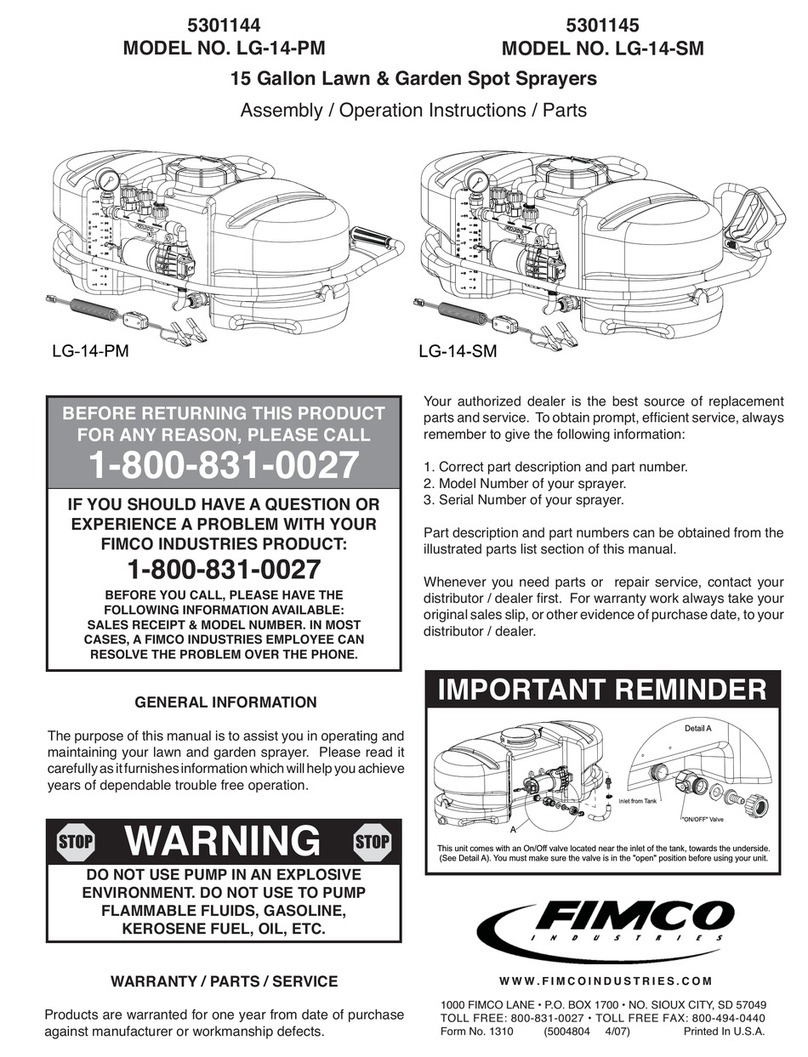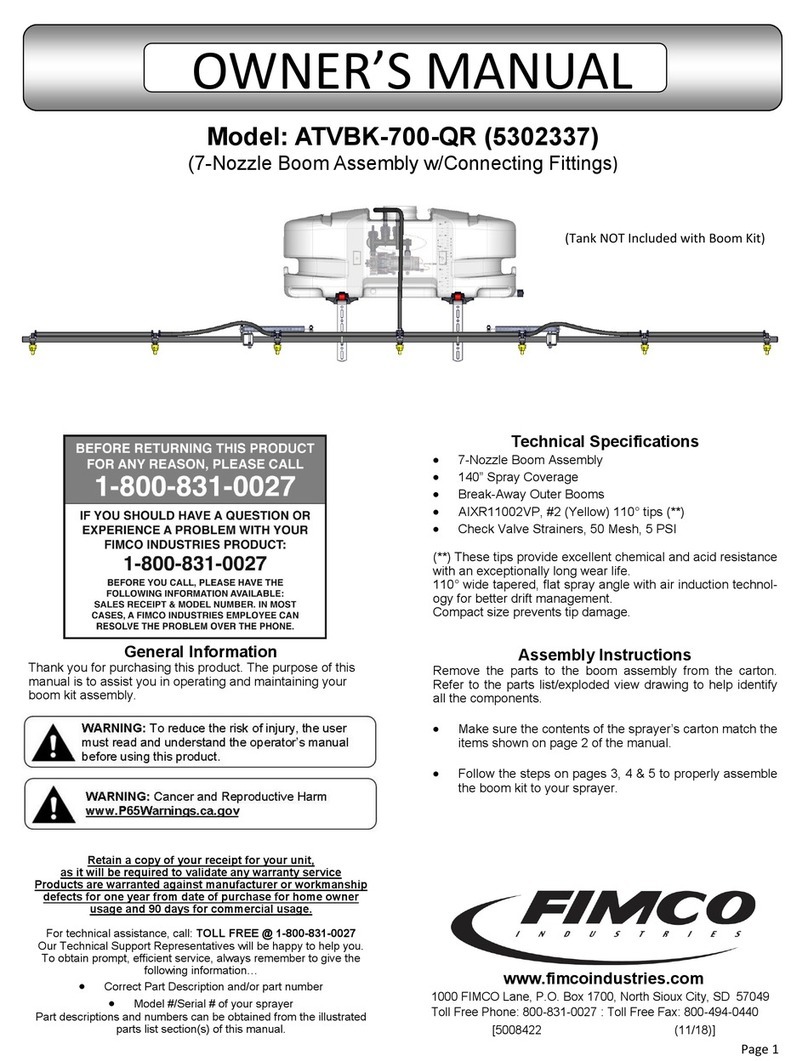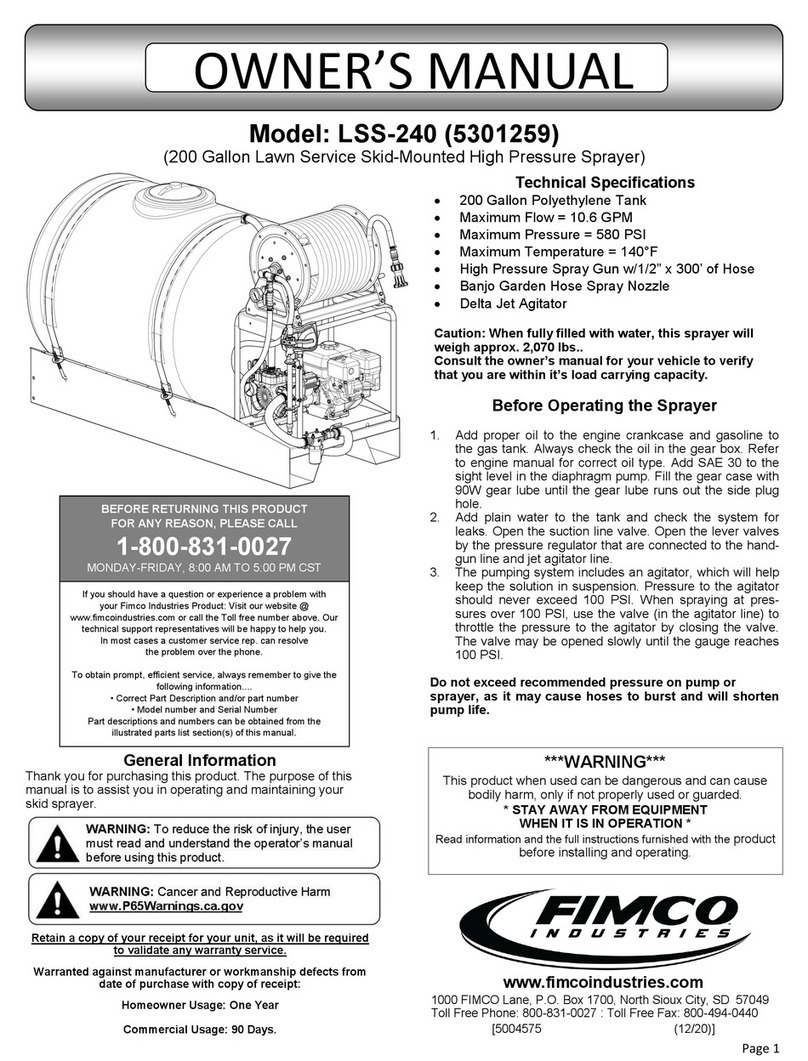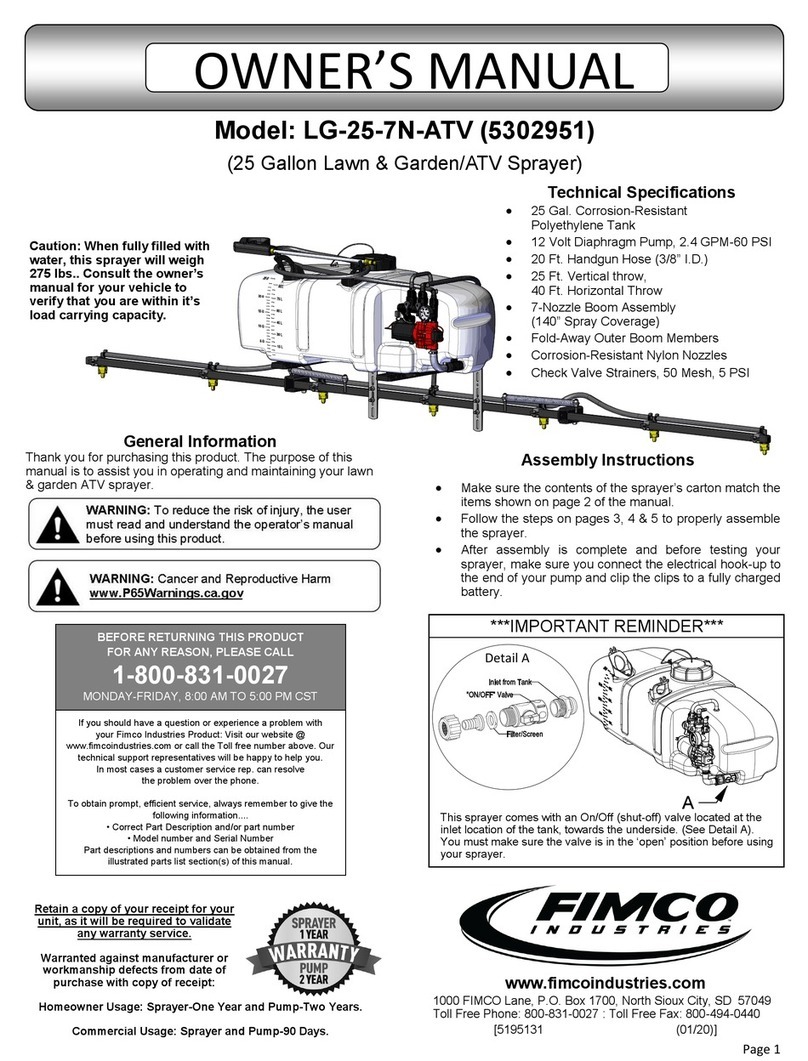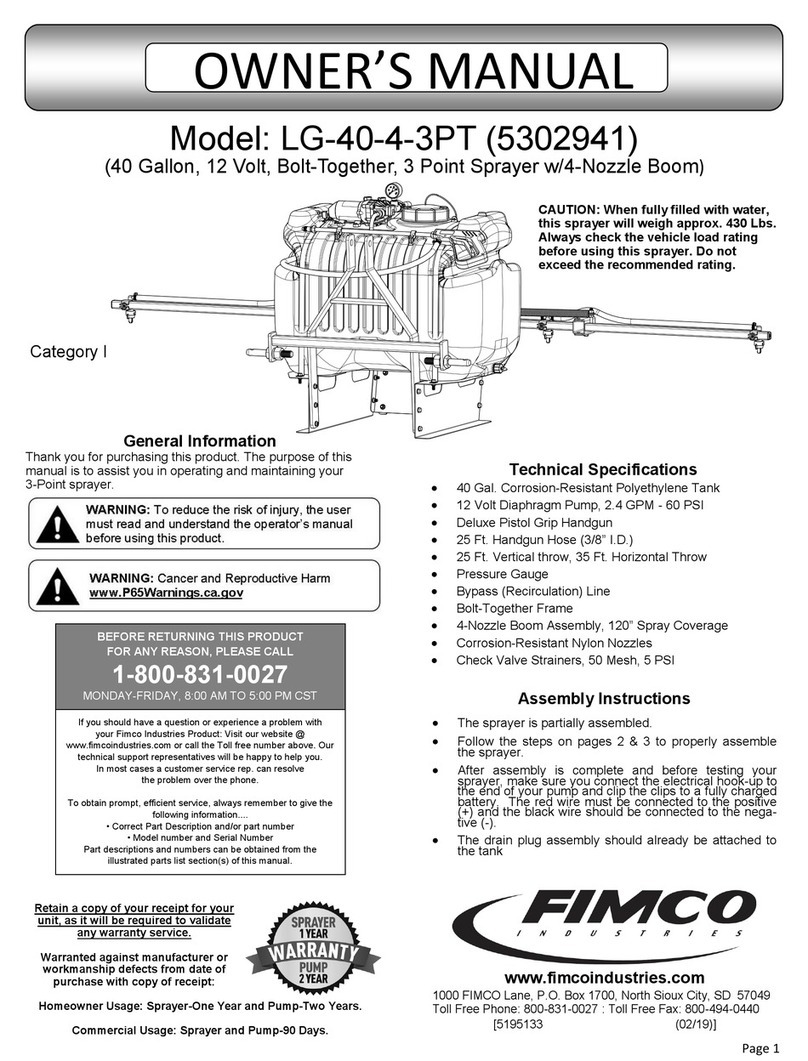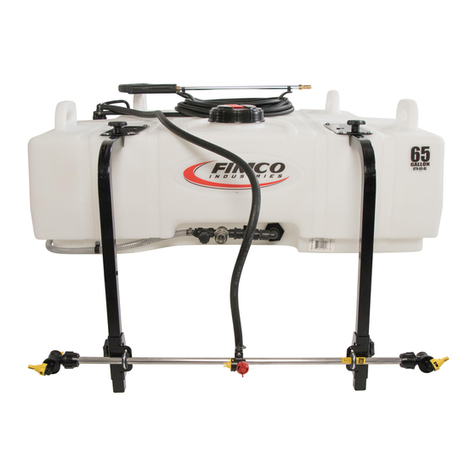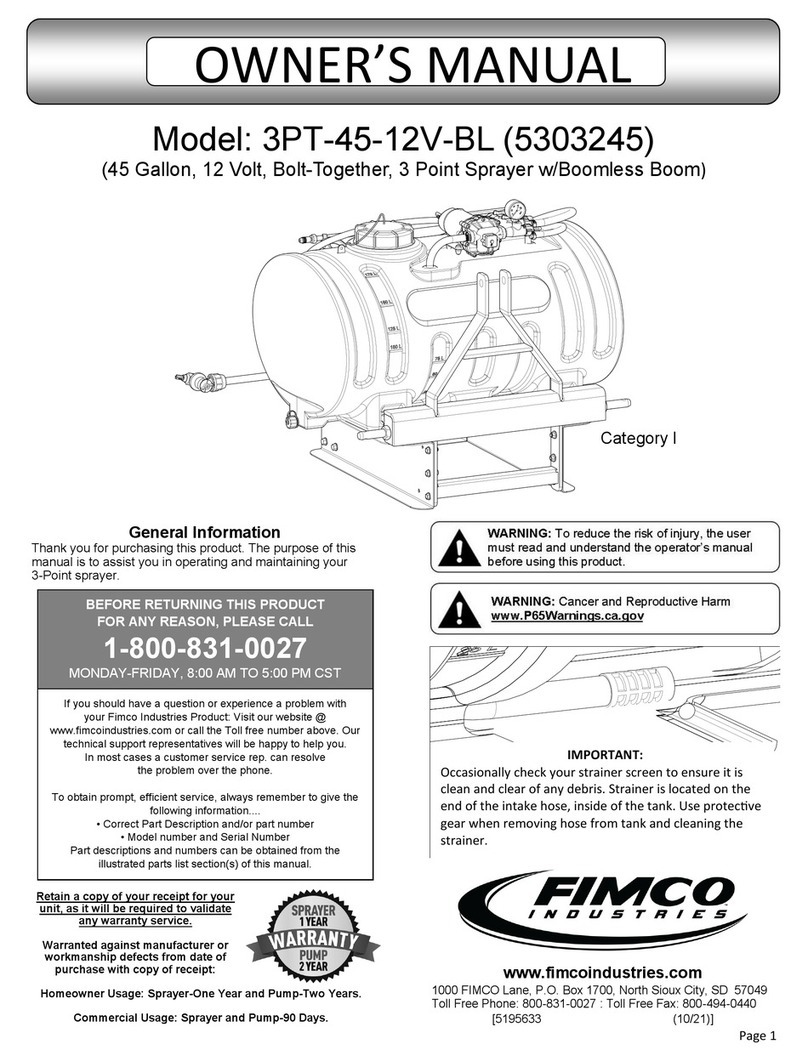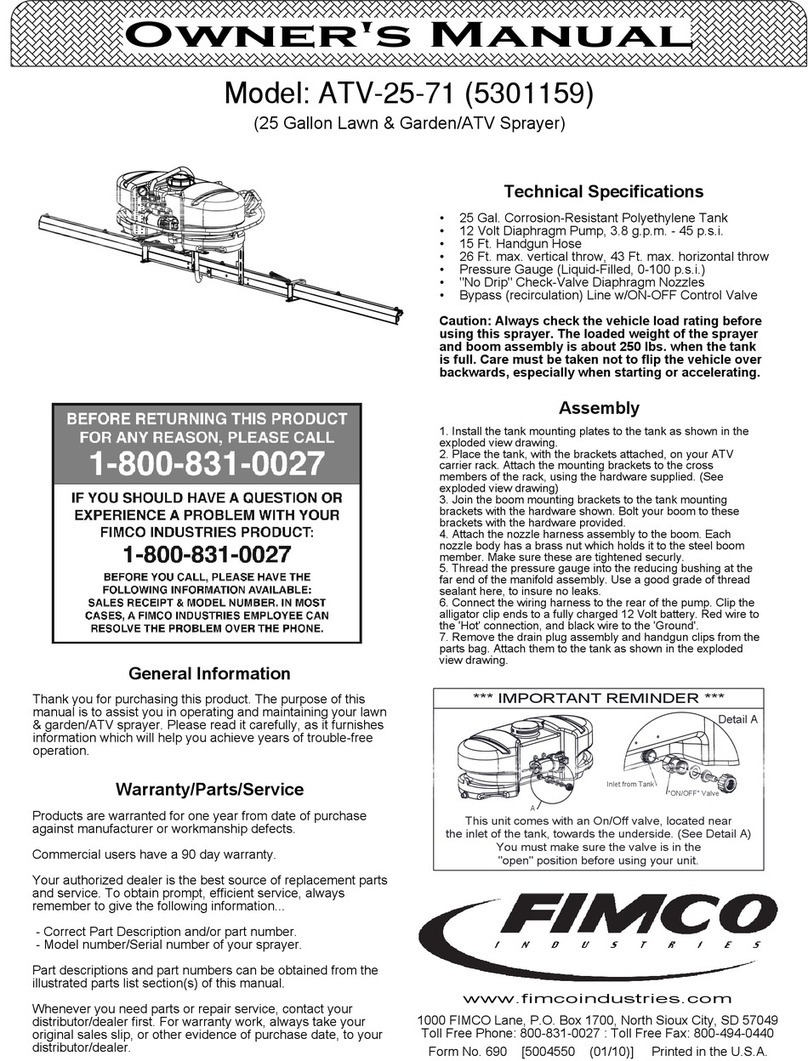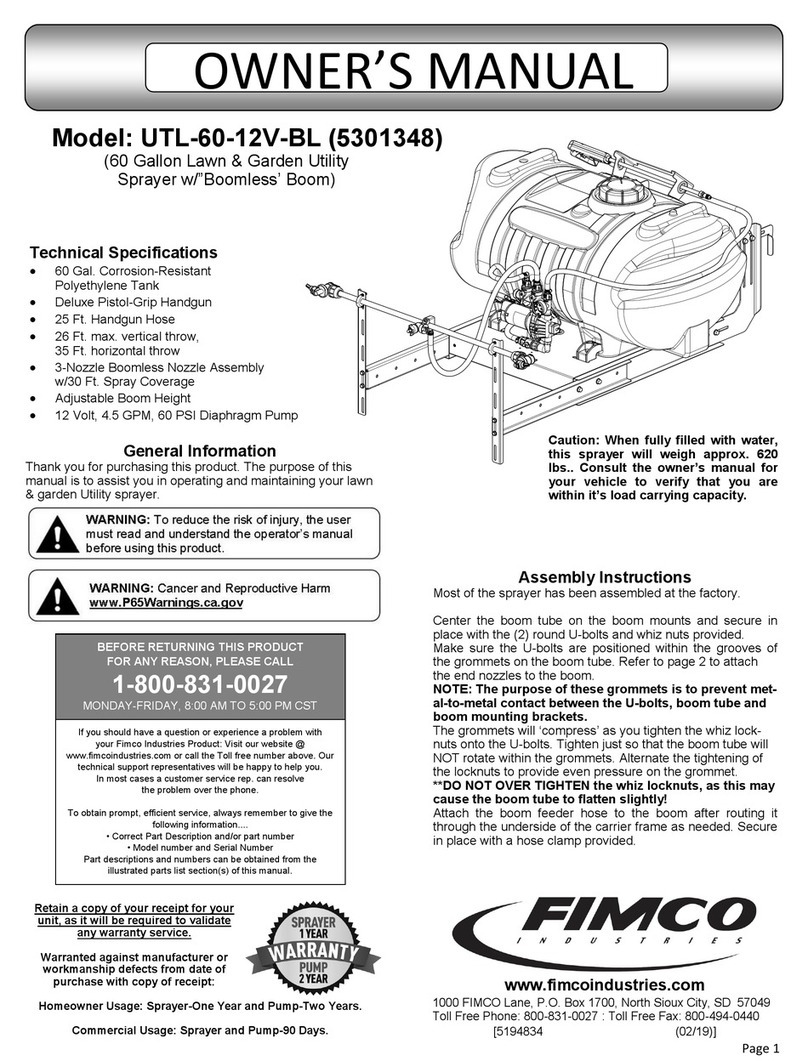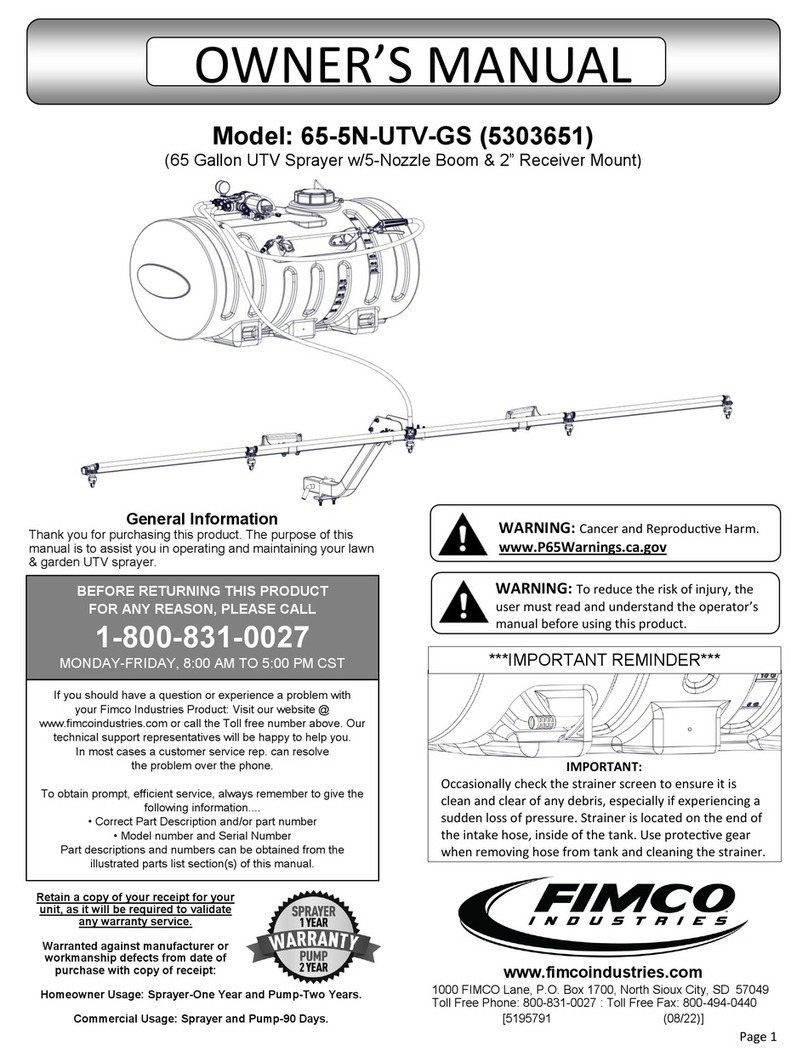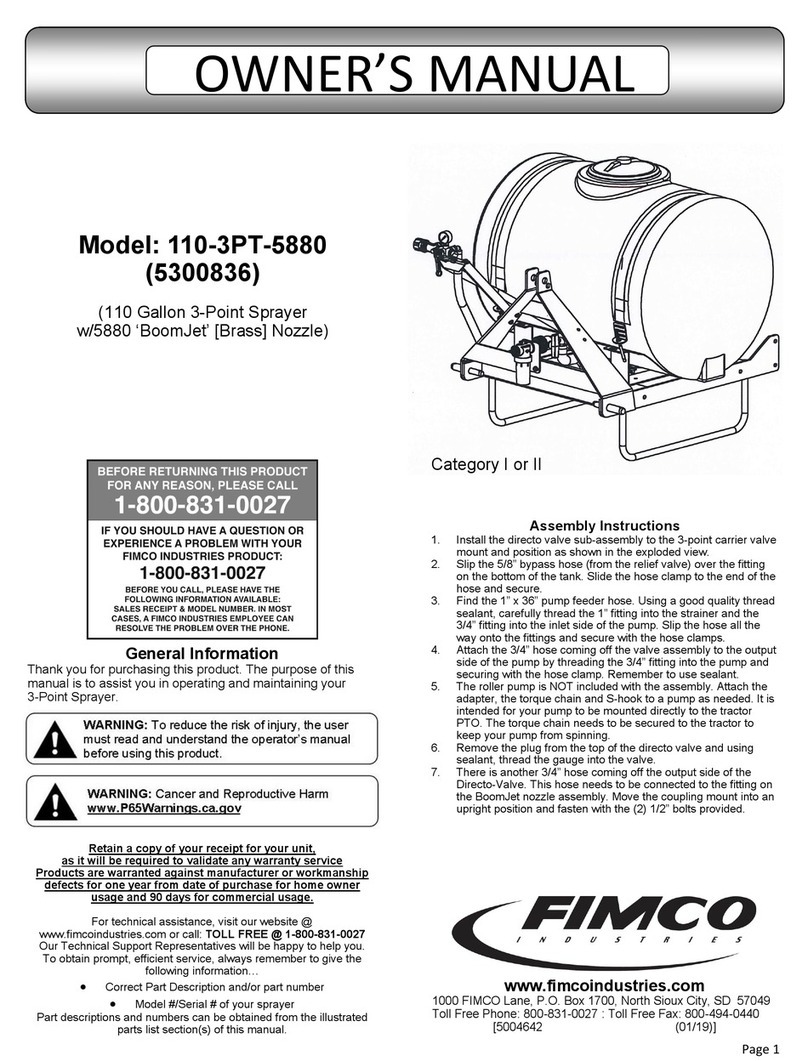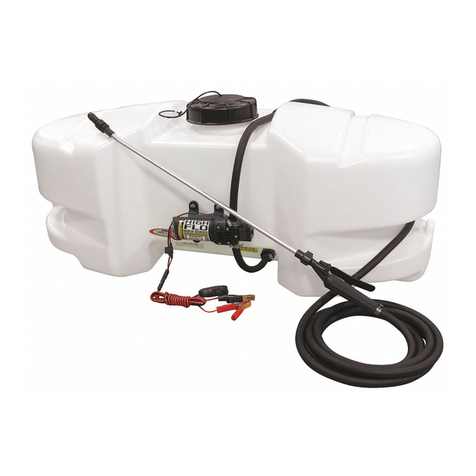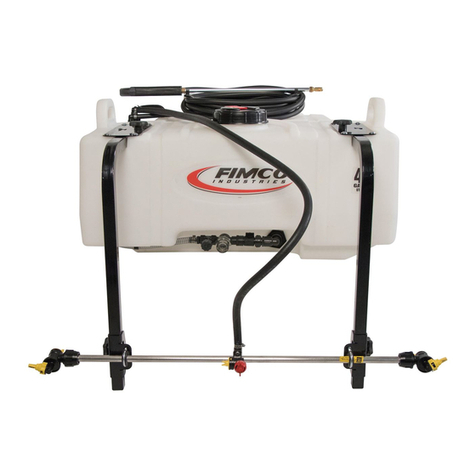
Page 2
Testing the Sprayer
NOTE: It is VERY important for to test your sprayer with plain water
before actual spraying is attempted. This will enable you to check for
leaks without the possibility of losing any expensive chemicals.
Conditions of weather and terrain must be considered when setting
the sprayer. Do not spray on windy days. Protective clothing must be
worn in some cases
Be sure to read the chemical label(s) before application!
Calibration
Chemical labels may show application rates in gallons per acre,
gallons per 1000 square feet or gallons per 100 square feet. You will
note that the tip chart shows 2 of these rating systems.
Once you know how much you are going to spray, then determine
(from the tip chart) the spraying pressure (PSI), and the spraying
speed (MPH).
Determining the proper speed of the pulling vehicle can be done by
marking off 100, 200 & 300 feet. The speed chart indicates the
number of seconds it takes to travel the distances. Set the throttle
and with a running start, travel the distances. Adjust the throttle until
you travel the distances in the number of seconds indicated by the
speed chart. Once you have reached the throttle setting needed,
mark the throttle location so you can stop and go again, returning to
the same speed.
Add water and proper amount of chemical to the tank and drive to the
starting place for spraying.
Using the Boom Nozzles
Four things must be considered before spraying with the boom.
How much chemical must be mixed in the tank.
Rate of spray (gallons per acre to be sprayed).
What pressure (p.s.i.) will be used.
Speed traveled (mph) while spraying.
Refer to the chemical label to determine your chemical mixture
See the tip chart to determine the pressure to be used. The
chart will also show the speed used when spraying.
Operation
Always fill the tank 1/2 full with water first and then add the chemical
slowly, mixing as you pour the chemical into the tank and then fill the
rest of the way. You may use the bypass in order to mix the chemical
and water.
Activate the handgun by squeezing the handle lever
Rotating the adjustable nozzle tip on the handgun will change
the tip pattern from a straight stream to a cone pattern (fine mist)
Maintenance During/After Spraying
Periodically check the strainer and clean the screen at the bottom of
your intake tube.
Proper care and maintenance will prolong the life of your sprayer.
After use, fill the sprayer tank part way with water. Start the sprayer
and allow the clear water to be pumped through the plumbing system
and out through the spray nozzles. Refill the tank about half full with
plain water and use FIMCO Tank Neutralizer and Cleaner and repeat
cleaning instructions above. Flush the entire sprayer with the
neutralizing/cleaning agent, then flush out one more time with plain
water. Follow the chemical manufacturer’s disposal instructions of all
wash or rinsing water. For the boom (if applicable) remove the tips
and screens from the nozzle assemblies. Wash these items out
thoroughly. Blow the orifice clean and dry. If the orifice remains
clogged, clean it with a fine bristle (NOT WIRE) brush or with a
toothpick. Do not damage the orifice. Water rinse and dry the tips
before storing.
WARNING: Some chemicals will damage the pump valves if allowed
to soak untreated for a length of time! ALWAYS flush the pump as
instructed after each use. DO NOT allow chemicals to sit in the pump
for extended times of idleness. Follow the chemical manufacturer’s
instructions on disposal of all waste water from the sprayer.
Winter Storage
Prepare the sprayer for end-of-season storage by running RV
antifreeze through the system. This will keep internal parts lubricated,
protect against corrosion and keep the unit from freezing. Note: RV
antifreeze is non-toxic and biodegradable and generally safer for the
environment than automotive antifreeze.
Before storing your sprayer for winter or long term storage, thoroughly
clean and drain it as much as possible. Then pour enough pink RV
antifreeze into the tank so that when the pump is turned on you can
pump the antifreeze throughout the entire plumbing system, including
the bypass. Make sure to operate the boom and handgun until you
see pink fluid spraying from the nozzles. Leave any remaining
antifreeze in the tank. Before your next usage, rinse the antifreeze
from the sprayer with clean water.
It is nearly impossible to drain all of the water from the sprayer and
any trapped water can freeze in cold weather and damage parts of the
sprayer. Pumping the antifreeze through the system will displace the
water and help prevent this damage.
Removing from storage: drain the antifreeze. Fill the tank with fresh
water and run through the system. Dispose of antifreeze and flush
water properly.
Speed in M.P.H.
(Miles Per Hour)
Time Required in seconds to travel a distance of
Based on the minimum overlap required to obtain uniform
distribution with 110° tips and 20” spacing.
Suggested Minimum Spray Height: 16”-18” above what is
being sprayed (to plant, not ground).
Optimum Spray Height: 20”
15 .12 35.6 17.8 11.8 8.9 7.1
20 .14 41.6 20.8 13.8 10.4 8.3
30 .17 50.4 25.2 16.8 12.6 10.1
40 .20 59.6 29.8 19.8 14.9 11.9
15 .12 .41 .27 .20 .16
20 .14 .48 .32 .24 .19
30 .17 .58 .39 .29 .23
40 .20 .68 .45 .34 .27
Gal. Per 1000 Sq. Ft. - Based on Water
Spray Tip Rate Chart (20" Spacing)
Gal. Per Acre - Based on Water
